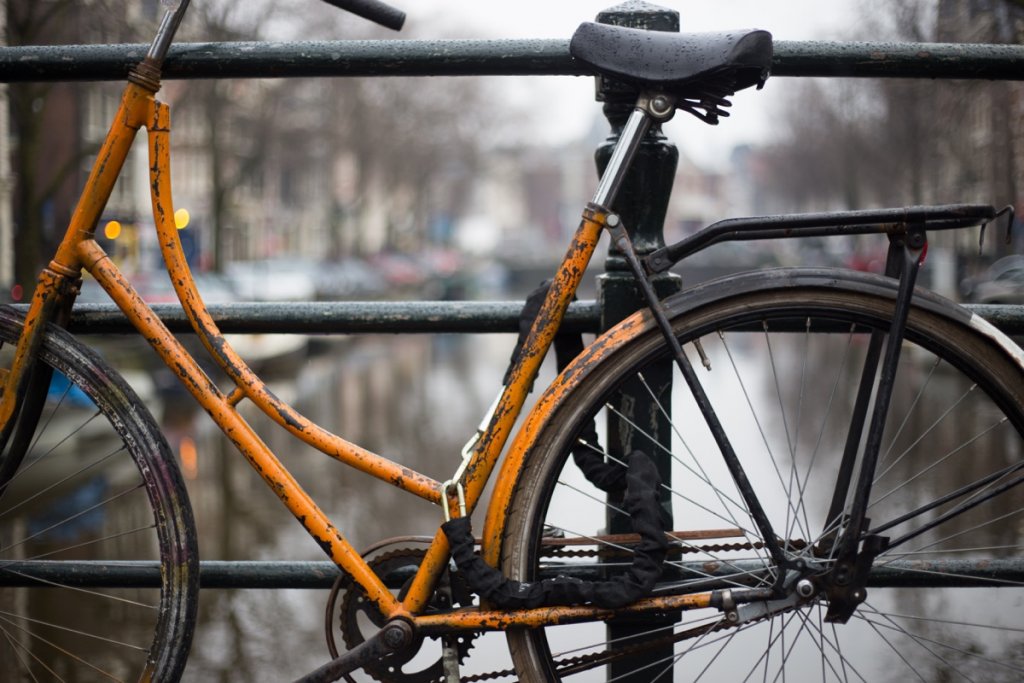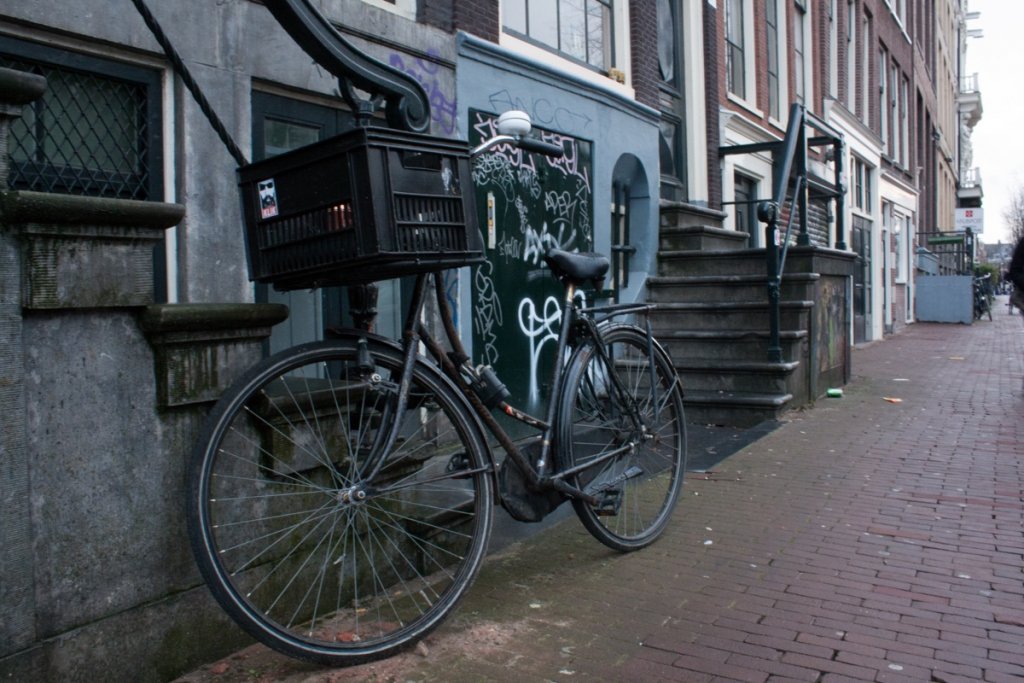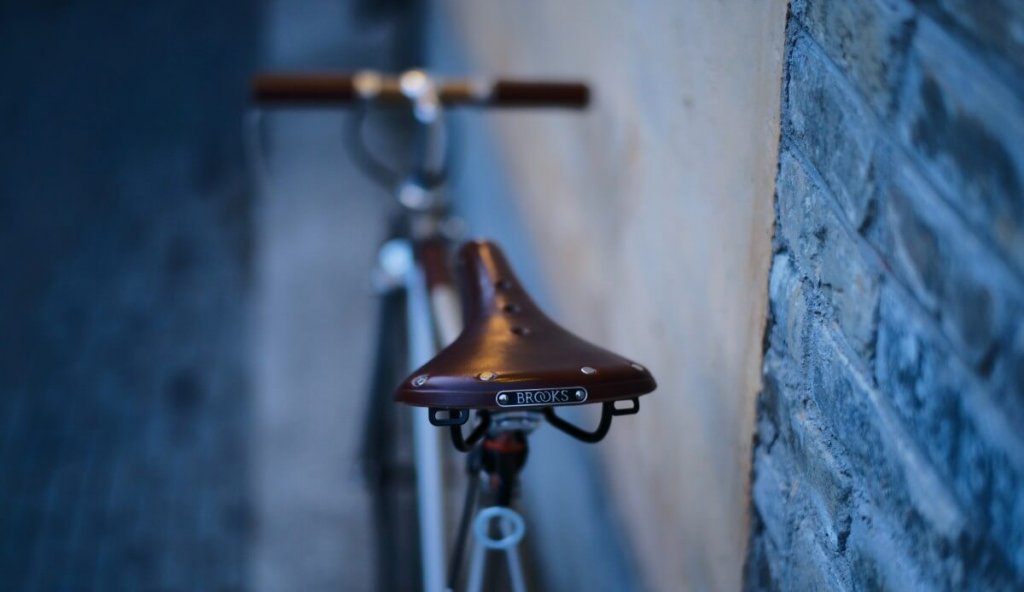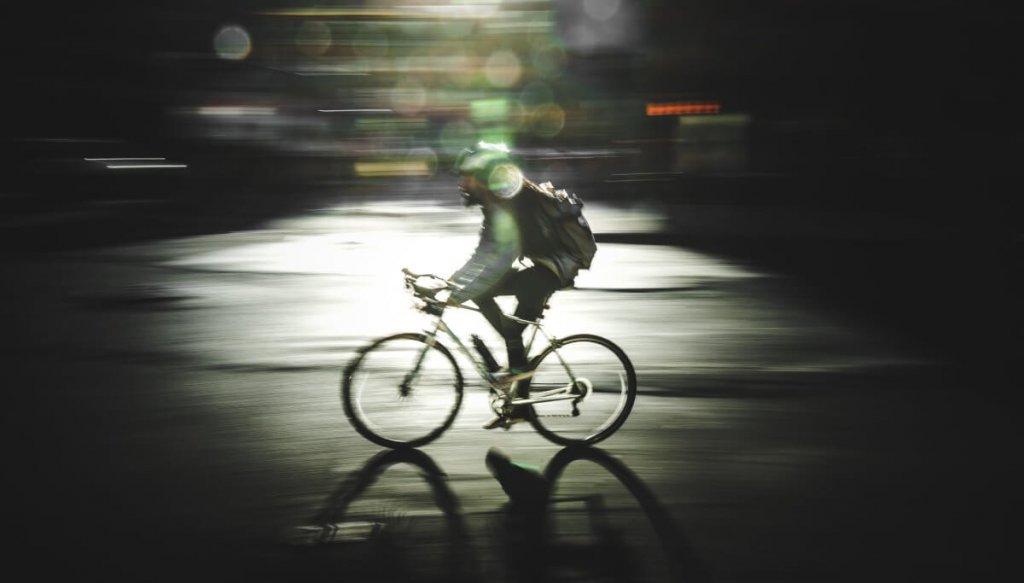Did you know that there are more bicycles in the Netherlands than there are people? We use our trusty two-wheelers to cycle everywhere. It’s a great way to get some daily exercise—and to combat air pollution. But unfortunately, thieves seem to love our bikes as much as we do, as thousands of bicycles are stolen each year.
It’s incredibly annoying when your bike is suddenly gone. Because let’s face it–the first thing you’re thinking after your bike is stolen is probably, “I knew I shouldn’t have locked my bike up here” or, “I knew I should have locked my bike up better” or, “Why am I such an unlucky and hapless idiot?”
If this happens to you, it’s certainly a relief to know that you have bicycle insurance or contents insurance that covers theft—check out some of our options here.

Of course, the best outcome is simply to avoid having your trusty ride stolen in the first place. Despite bicycle theft being the most common form of crime in the Netherlands, there are still many ways to prevent it. We asked some bike experts and some bike-theft experts (i.e, people who’ve had their bikes stolen–not people who steal bikes) for some tips on how to best protect your wheels.
Make sure your bike is actually locked
Okay, so let’s start with the painfully obvious. When you go to lock up your bike… make sure you actually lock up your bike.
Take it from Scott Indrisek, managing editor at Lemonade. “I lost my beloved Fuji Feather single-speed a few months ago because I ducked into a Thai restaurant for dinner and left the bike ‘locked’ outside,” Scott told us, with the defeated voice of someone who knew they f’d up.
“Forty-five minutes later, I came back out to find the bike gone, and my sturdy U-lock dangling from the street sign where it had been.”
Buying a new bike will also give you a rush of nostalgia that you won’t get with many other “grown-up” purchases—which is why falling victim to bicycle theft is such an emotional punch to the gut.
In his haste to devour a plate of basil chicken, Scott did the unthinkable: He locked his bike lock to the pole, without ensuring any part of the actual bike was involved in the equation. “A painful lesson learned,” he lamented.
While it seems like an easy mistake to avoid, things can happen when you’re in a rush. So always double check to make sure that, a) the bike is actually connected to the lock, and b) the lock itself is securely fastened.
Also obvious, but don’t leave your bike unattended under any circumstances–even if you’re just popping into the Albert Heijn for a bottle of water. This would be a bike thief’s dream come true.
How and where to lock your bike
A poorly locked bike will disappear quickly, especially if you live in a major city. Putting a couple extra minutes of thought into how and where you’re locking your bike could go a long way in preventing your trusty steed from being bike-knapped.
“Locking only the front wheel or back wheel to a pole is a very common mistake,” Javier S., owner of a bicycle shop told us. This is especially true for bikes that have quick-release wheels.
“If you have a quick release wheel, it makes it easier for anyone to just remove the wheels and take the frame with them,” Javier explained. “Make sure to always lock up the rear wheel along with the frame.” For those who are extra-cautious, it might be a good idea to use two locks: a classic U-lock for the bike frame, and a chain or cable lock that can be threaded through both wheels.

Location is also super important. If you’re in a major city like Amsterdam, Rotterdam, or Den Haag, scaffolding, street signs, and fence posts are abundant and can work in lieu of a bike rack. But there are a few things to consider before letting your bike out of your line of sight. Your bike will only be as secure as the object it’s fastened to, so make sure you always choose an immovable object that can’t be easily broken.
When it comes to locking your bike, not all locations are safe. Avoid unsecured street signs or fences, and exercise extreme caution if you’re hooking your bicycle to construction scaffolding.
Double check the street sign to ensure it’s securely fastened into the ground. It’s not uncommon for street signs to become loose, making it possible for a thief to jiggle them out of their place and slide your bike off with ease. You’ll also want to avoid locking your bike to any wooden fences or any particularly thin pieces of steel– or, anything else you think might be easily snipped with a pair of bolt cutters.
If you’re locking up to scaffolding, make sure you’re only securing the bike to the vertical bars. The horizontal bars on scaffolding can be easily unscrewed and removed, leaving your bike vulnerable. If possible, try to avoid scaffolding all together. Scaffolding by nature is an impermanent structure, so the longer your bike is locked there, the more likely it is you’re going to lose that bike.
Theft-proofing your bike
If you’re serious about the safety of your bike, it will definitely be worth it to invest in a few simple modifications that can significantly decrease the likelihood of it being stolen.
For example, you can install a wheel lock or buy a saddle clamp. It’s also smart to only buy locks that are ART approved (don’t buy a lock that has less than 2 stars). These locks are tested and are a good security measure to protect your bike from theft. You can find the list of approved locks here.
And don’t forget about your bike’s nifty accessories. That expensive gel-cushioned bike seat you bought is super comfortable and looks really sleek– but your local bicycle thieves probably think so too. So if your bike’s saddle has a quick-release option, either take the seat with you or secure the seat by replacing the quick release with a binder bolt.

Tip for e-bikes: the battery of an e-bike is very valuable. If your battery is not fixed to your bike, it is smart to take it with you when you have parked your e-bike somewhere. Stealing a battery can be done in a couple of seconds – they are often even taken in the middle of the day.
The final tip is to purchase a bike according to your risk profile. If you live in a tiny studio apartment in the middle of a crowded city, and you know you won’t be able to store your bike anywhere indoors, it might be time to accept the fact that you absolutely should not buy that awesome $8,000 titanium road bike you’ve been eyeing.
Fact: Amsterdam, Rotterdam and Maastricht are the most unsafe cities for your bike. You are more likely to not find your bike back where you left it in those cities. Other places with high theft rates are Utrecht and Schiedam. If you live in these cities, it might be a better idea to buy a cheaper or second-hand bicycle.
Is any lock really theft-proof?
Bike thieves are innovative, which means that it’s unlikely anyone will ever create a lock that is 100% theft-proof. But spending a little money on a tough-to-crack lock will at least lower your chances of theft. There’s no easy way around it: A serious bike lock is going to be a bit cumbersome. But cheap, lightweight cable locks alone can be easily cut by savvy thieves, so the inconvenience is worth it.
The Dutch cyclists’ union has figured out for us which locks are truly the best. They came to the conclusion that folding locks and U-locks are not the safest options. You’re better off going for a ring lock and a separate chain lock of at least 85 centimeters. Click here for the best tested locks (the number of ART stars is also listed – how convenient!).
How to recover a stolen bike
Let’s say you followed all of these tips, and somehow, your bike still got stolen. You could first call your local police department to file a report, and then file a claim with your insurance company to try to recoup the amount it would take to purchase a replacement.
Or, maybe you’ve been preparing for this since the day you purchased your bike. We’re definitely not recommending you start your own vigilante bike-theft investigation, but there’s certainly some steps you can take to potentially make recovering your stolen bike a bit easier.
The first would be to purchase a GPS tracker. This might sound like something straight out of a Bond movie, but welcome to 2020, baby. These days, GPS trackers are tiny, affordable, and can be purchased online or in a bike shop. While it may not prevent your bike from being stolen in the first place, it can make tracking it down a lot easier.

Or, take the old-fashioned route. A common tactic is to write a short note on a tiny roll of paper and stuff it into your bike’s seat-post tube. Oftentimes, bicycle thieves will steal the bike with the intention of immediately trying to pawn it off to a shop, or sell it on Craigslist or Ebay. So on your note, you can write something like “If this bike was sold by anyone else other than Mrs. Original Bike Owner, it has been stolen,” along with your phone number. It might be a long-shot, but it’s definitely worth a try and requires minimal effort.
Does your contents insurance cover bicycle theft?
Yes and no. Your bicycle is part of your contents and is covered if someone breaks into your home (or shed) and steals your bicycle. However, it is a different story when your bicycle is stolen outside your home. For this type of theft you are usually not insured. You’ll need to have coverage outside your home.
With Lemonade you have the option to insure your bicycle outside your home. Add the anti-theft package when getting your contents insurance policy so all your belongings (not just your bicycle!) are insured worldwide against theft. But don’t forget to lock your bike with an ART-approved lock (at least 2 stars). And if your bike is worth more than € 5.000 it needs to be added separately to your policy so it is fully covered in case of damage or theft.
Reporting the damage or theft can simply be done through our app using Lemonade’s claims bot: AI Jim. All you have to do is answer a few short questions and record a video explaining what happened.
At the end of the day, bike theft is fairly avoidable. With a couple of sturdy locks, and the knowledge of how and where to effectively lock the bike, you should be in the clear. And if all else fails, your Lemonade contents insurance will have your back. Safe riding!




